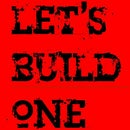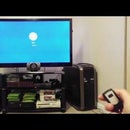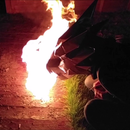Introduction: 6mm Coil Gun
This is roughly as powerful a coil gun as you can make using a standard mains switch. To make a more powerful coil gun you will need a higher rated switch, preferably solid state.
Through much research I found all the Variables that affect the efficiency of a coil gun:
Projectile
Length
Stabilisation
Diameter
Length to diameter ratio
Material
Conductivity
Aerodynamics
Initial Positioning
Mass
Flux Linkage
Coil
Length
Number of layers
Thickness of wire
Flux linkage
Current Pulse length
Switch bounce and resistance
Capacitor Voltage and Capacitance
Overall wire length and diameter used.
Also there are several ways to increase standard performance using:
Optical, Inductive or Physical Triggering
Multiple stages
Super cooling
Step 1: The Plan
I had some 6mm steel bar, some 6mm plastic pipe, a micro switch and some enamel coated wire as a starting point.
I took apart 17 disposable cameras and soldered the capacitors in parallel to form a capacitor bank of 1360uF 330v which using E=1/2CV^2 gives a stored energy of 73J.
I used one of the camera circuits as a charging circuit by removing the flash, removing the trigger switch and soldering the charge switch closed.
I then used an old mains PSU switch as a charging switch although any switch will do. The whole circuit was covered thouroughly in insulation tape and put in the only plastic box of the right size I could find at the time; An empty Bertolli spread box.
I wrapped a coil out of 26AWG enamel coated wire 30mm long and 7 layers thick. This is because the coil should be the same length as the projectile and the projectile should be five times longer than it is wide, hence 5x6=30. The number of layers is dependant on wire thickness and capacitor bank size and voltage. The thinner the wire, the smaller the bank, the less layers. wire too thin will impede flow and maybe burn out. Wire too thick will mean you have less coil density than is potentially attainable.
Simulations ran well after the device was constructed reveal this isn't an optimal design and there is some 'suck back' as you can see on the graph when the turquoise line falls bellow the axis suddenly.
Step 2: The Coil
Find a tube that isn't made out of metal, with thin walls and that is a close fit for the prospective projectiles. Measure the interior diameter and multiply this by five, this will be your coil and projectile length. Measure this distance, for me 30mm, from the end of your tube and make a mark using a permanent marker. Measure another 30mm down and make another mark. Your coil will be wrapped in between these two points. Wrap some tape around the tube at these points to form flat sided ends to wrap your coil up to. These should be approximately the diameter of your projectile deep.
Get your enamel coated wire and tape it to the tape stopper at one end and start coiling the wire around the tube, when you reach the end use super glue to hold the first layer in place. When it has dried start coiling again, this time the coil will go back to the starting end over the top of the first layer and glue in place. Repeat this process for approximately 7 layers. When the coil is finished put on a layer of insulation tape and your done.
Step 3: The Circuit
The circuit is very simple. Take the Camera circuit and chop off the flash trigger "switch". It is usually two flimsy bits of copper that stick out of the circuit on one side.
Next solder the charge switch closed and add extension wires that you can solder onto your battery holder with an toggle switch. This is your charging switch and should be a switch over toggle so that one side is charge and the other is safety so that you can never fire it while the charge circuit is engaged. Doing so wouldn't damage the coil gun but it's good practice not to, especially when you upgrade to a mains powered coil gun.
Remove the flash tube and capacitor taking care to remember the polarity. Solder in new wires from the circuit where the capacitor was previously connected.
Take your capacitors, essentially you want as many as possible and solder them in parallel so that all the negative legs are connected on a rail and all the positive legs are connected on a separate rail. Solder the wires from the charge circuit to the bank.
Solder on the two thickest wires you can find to go from the capacitor bank to the coil and insulate the whole circuit with heat shrink, insulation tape and hot melt glue. You do not want any chance that you may accidentally electrocute yourself. I will warn you now, it hurts... ALOT... and when you've got a bank of over 50J it can make you feel very ill. Not an enjoyable experience.
Solder in your push switch in line with the positive lead from the cap bank and then to the coil you just wrapped.
Put all this circuitry in a nice safe plastic box and your ready to go!
Step 4: The Projectiles
30mm sections cut out of 6" nails and other 6mm round ferrous rod I had lying around. As I didn't understand the principles at the time many different lengths and shapes where made and tested. I shaped them by putting the bar in an electric drill and using a file and various grades of sand paper to remove material.
I've done a separate Instructable on Projectile Design since it is such a big section.
Step 5: The Results
It works reasonably well! Using Vertical drop VUSAT equations and thorough testing I found that an optimum of 13m/s, 50KPH, 30MPH. Using KE=1/2MV^2 I found that the projectile had a maximum of 0.6J Kinetic energy. This was initially exciting but after realising some AirSoft guns are as much as 1J I was slight disappointed and decided to up scale as I had reached the limit of these components.
UPDATE
I've designed and built a 50 cal 217J Coilgun.













